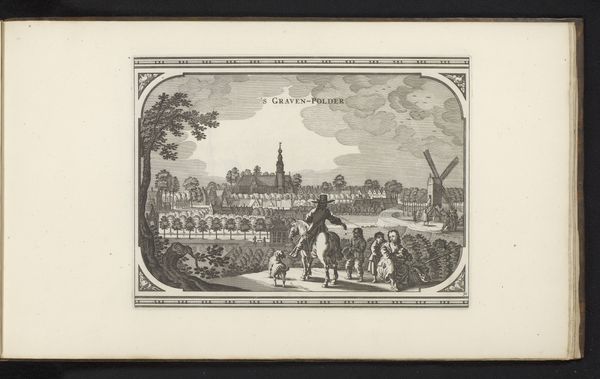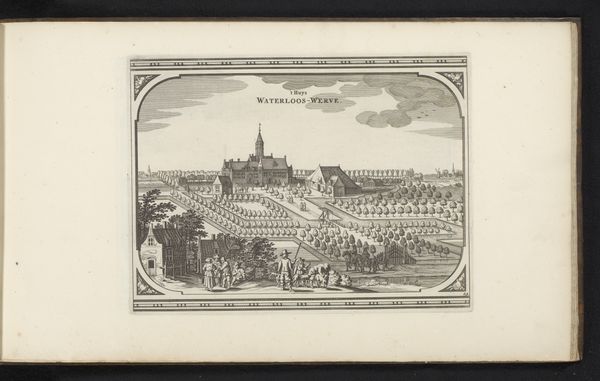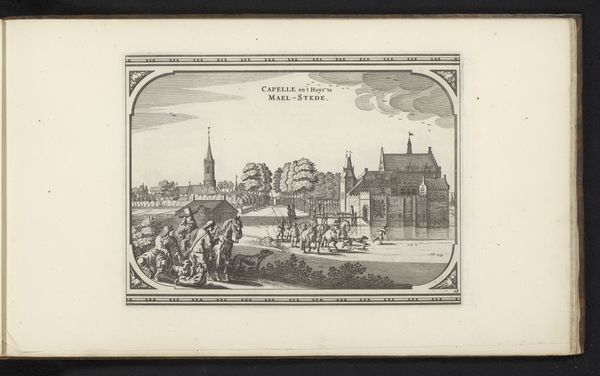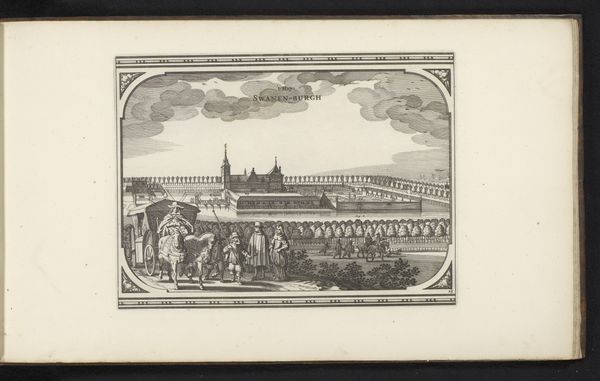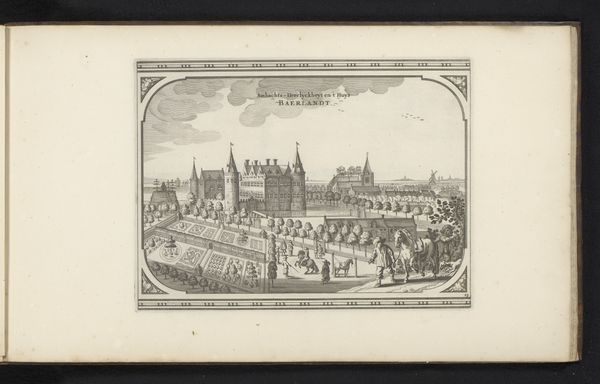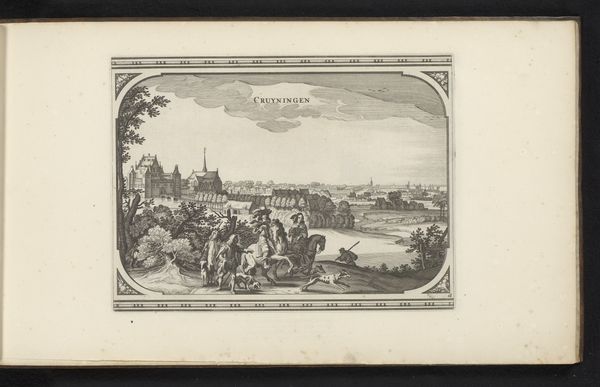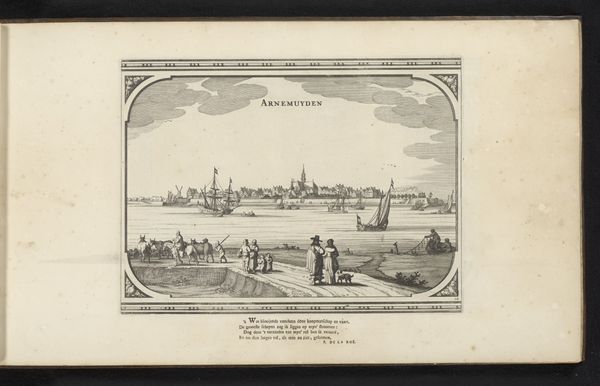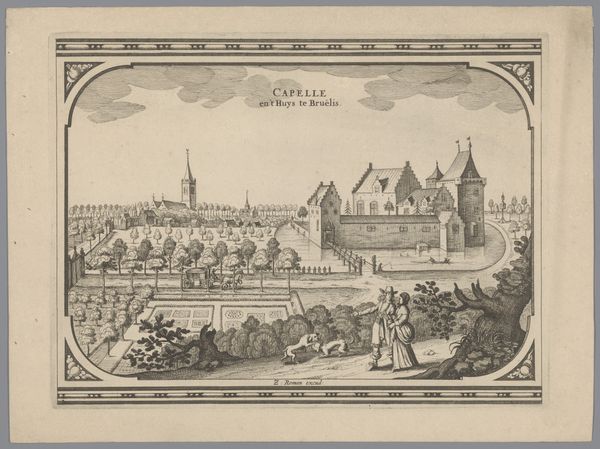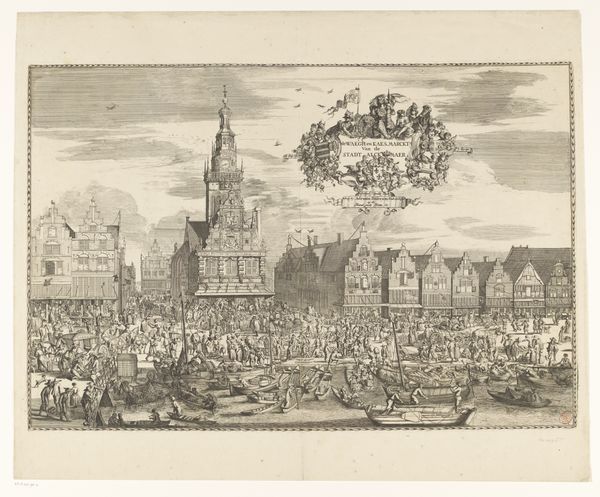
drawing, print, engraving
#
drawing
#
baroque
#
pen drawing
# print
#
landscape
#
engraving
Dimensions: height 215 mm, width 286 mm
Copyright: Rijks Museum: Open Domain
Pieter Hendricksz. Schut created this print of Bruëlis Castle in the mid-17th century, using a technique called etching. This intaglio process involves coating a metal plate with a waxy, acid-resistant substance, then drawing through it to expose the metal. Acid is then applied, biting into the metal to create recessed lines that hold ink. The resulting print has a distinctive quality. Look closely, and you'll notice its fine, precise lines, achieved through the careful manipulation of acid and the controlled pressure of the printing press. But consider also what this process meant socially. Printmaking was a burgeoning industry at this time, driven by the rise of a mercantile economy and increased literacy. Images like this one catered to a growing market for views and topographical scenes. The skilled labor involved in etching, from the preparation of the plate to the printing process itself, reflects the complex interplay between artistic skill, commercial production, and the dissemination of knowledge in the early modern period. So, when you look at this print, remember that you're not just seeing a picturesque view, but also a testament to the material processes and social forces that shaped its creation.
Comments
No comments
Be the first to comment and join the conversation on the ultimate creative platform.

